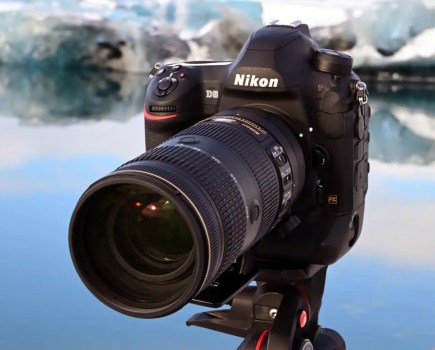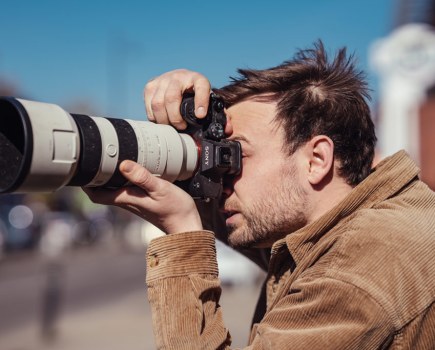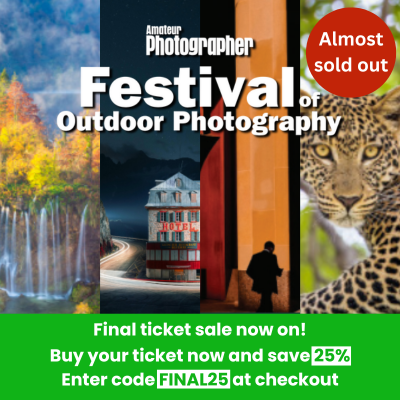Looking for a lens that will deliver images that are out of the ordinary? Andy Westlake is your guide to some of the more unusual and specialised lenses on the market.
Look in most photographers’ kit bags, and chances are you’ll find a similar set of lenses. The majority will likely spend much of their time shooting with a standard zoom: either the kit lens that came with their camera, or for more advanced users, a higher-end optic along the lines of a 24-70mm f/2.8 or a 24-105mm f/4 (or their equivalents).
Eventually, photographers will probably add telephoto and wideangle zooms alongside, for getting closer in to subjects or taking a broader view of the world. Next come fast primes for shooting in low light or for shallow depth of field, with 50mm and 85mm being the most popular options. Then for close-ups there’s the macro lens, most likely in the 90mm to 105mm range. Together, such a lens set should cover most types of photography.

Choosing an unusual lens such as a fisheye can add impact to familiar scenes. Olympus OM-D E-M5 Mark II, Samyang 7.5mm f/3.5 UMC Fisheye MFT, 1/800sec at f/5.6, ISO 200
However if you want to try something different and make your photos stand out from the crowd, it might be time to seek out something more exotic. In this article I’ll look at some of the most unusual and interesting lenses on the market and explain what they can be used for. And while you might think that such optics will inevitably be ruinously expensive, that’s not necessarily true. What’s more, even the pricier ones can be hired for a one-off occasion without breaking the bank.
Fisheyes
With their vast angle of view and extreme curvature of lines that conventional lenses would draw as straight, fisheye lenses are not for the faint-heated. But this is exactly the kind of challenge that might get your creative juices flowing and inspire you to look at the world in different ways. If you’d like to experiment with this look, Samyang offers a broad range of affordable fisheyes for all types of camera, ranging from a 7.5mm f/3.5 for Micro Four Thirds for £249, to a full-frame 12mm f/2.8 for £399.
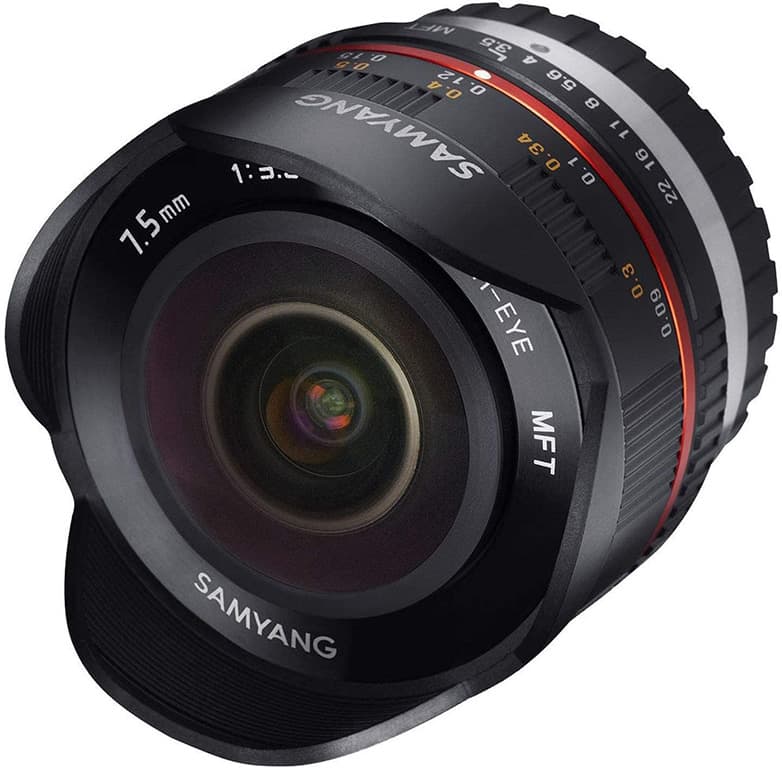
Micro Four Thirds users can also experiment with the Olympus 9mm f/8 Body Cap Lens (£89), while Pentax DSLR users can play with the 10-17mm f/3.5-4.5 zoom (£449 below). At the other end of the scale, Canon and Nikon both offer full-frame 8-15mm fisheye zooms for around £1,250.
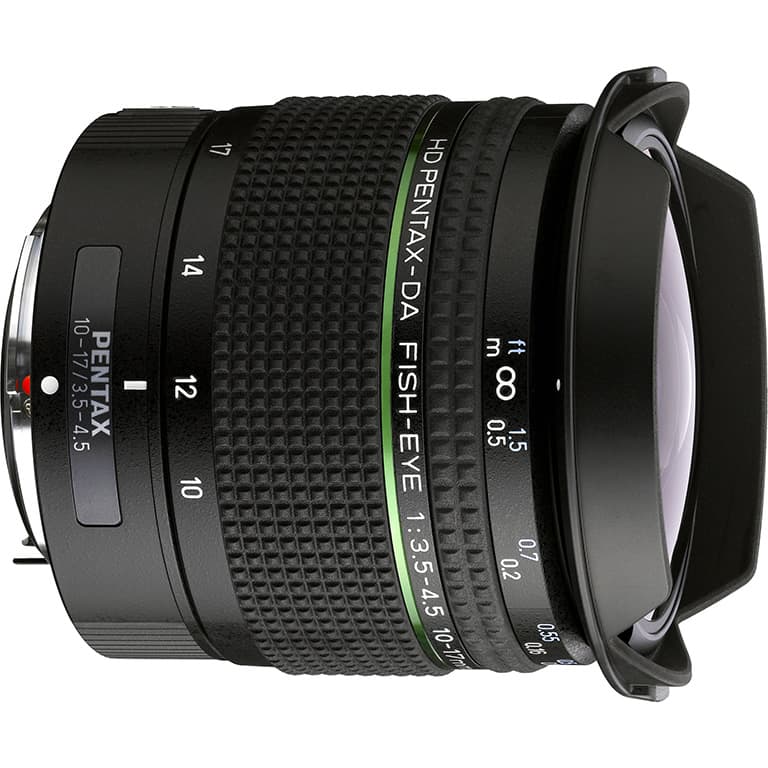
Ultra-fast lenses
One of the biggest differentiators between smartphone photos and those taken with ‘proper’ cameras lies with the ability to focus selectively on your subject and blur away the background using a large-aperture lens. In a bid to imitate this, ‘fake bokeh’ modes are now commonplace on smartphones, but even the best are unconvincing and don’t provide such attractive results. If you want to take this look to an extreme, you’ll need the largest-aperture lens you can get your hands on, and it also makes most sense to work with a full-frame system.
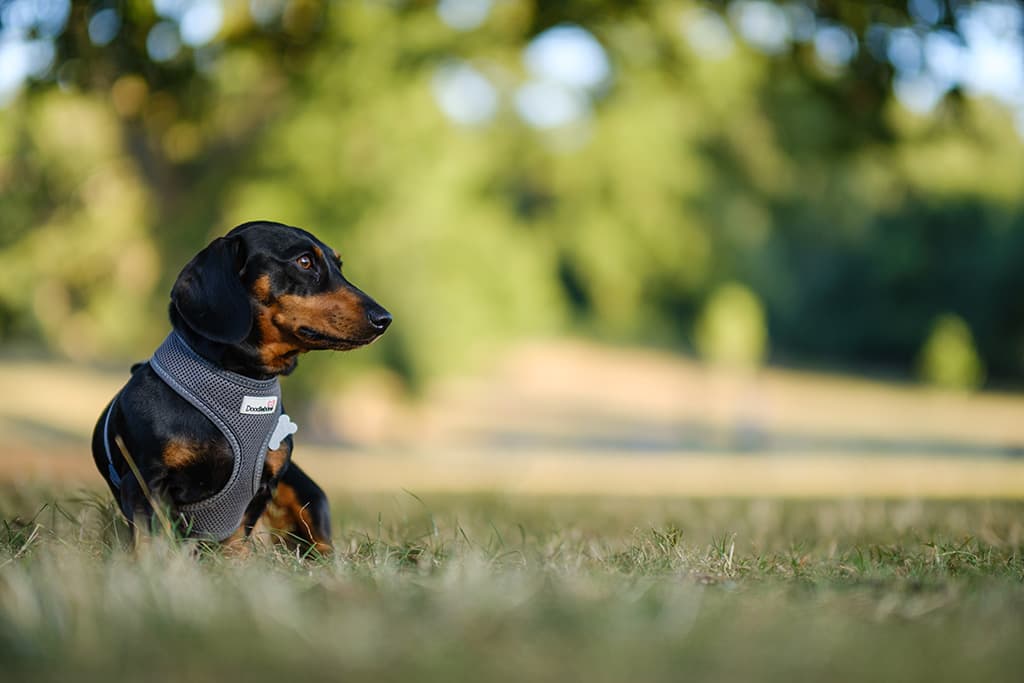
Ultra-large-aperture lenses can deliver strikingly shallow slices of sharp focus
Fujifilm X-T4, Fujifilm XF 50mm F1.0 R WR, 1/950sec at f/1, ISO 160
It’s not so long ago that anything faster than f/1.4 was considered extremely rare and expensive (not to mention barely possible to focus), but that’s all changed with the emergence of mirrorless cameras. One of the big advantages of these systems lies with lens design; freed from the constraints of leaving space for a mirror box, designers have more freedom to optimise the optics.
This allows ultra-fast lenses to be designed much more readily, while accurate focusing is also much easier as it directly employs the image sensor. As a result, you’ll find plenty of large-aperture manual-focus lenses from emerging Chinese makers for surprisingly low prices. But in general, you get what you pay for, with more expensive optics from longer-established names likely to yield technically better results.
 Sony FE 50mm F1.2 GM l £2,100 l www.sony.co.uk
Sony FE 50mm F1.2 GM l £2,100 l www.sony.co.uk
This isn’t the world’s fastest lens for full-frame mirrorless; that’s the Nikon Nikkor Z 58mm f/0.95 S Noct. But weighing in at fully 2kg and costing £8,300 for a manual-focus design, it has limited real-world appeal. Instead, the most practical ultra-large-aperture full-frame lenses are f/1.2, with Canon, Nikon and Sony all making autofocus 50mm designs, and Canon adding a pair of 85mm portrait lenses. The Sony 50mm f/1.2 manages to be the smallest, lightest and least expensive, while still being optically fabulous.
It delivers a giddying combination of impressive sharpness and lovely bokeh, backed up by rapid, reliable, and silent autofocus.
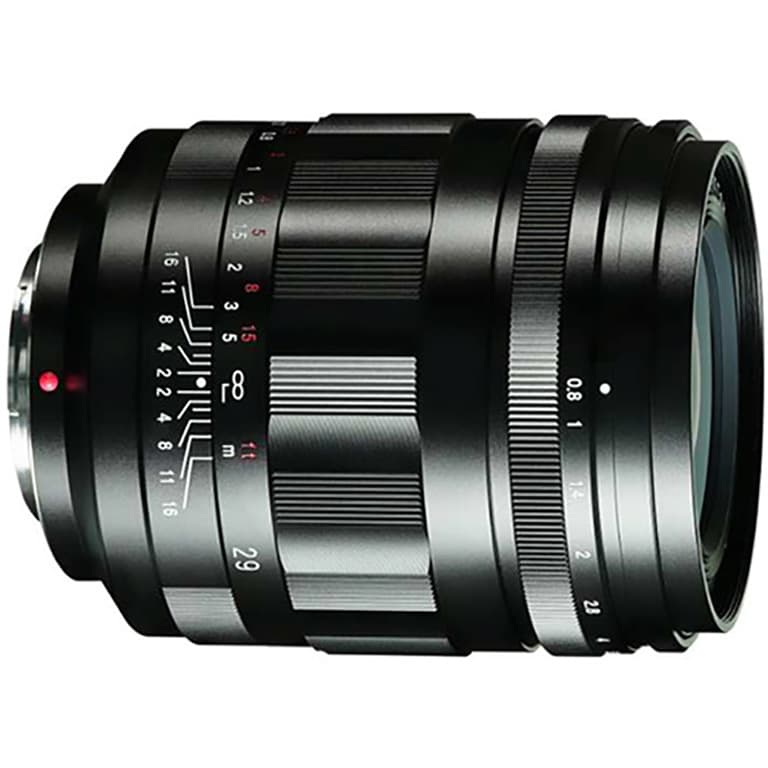
Voigtländer Super-Nokton 29mm f/0.8 ASPH MFT l £1,599 l www.voigtlaender.de
Not content with making a series of f/0.95 manual focus primes for Micro Four Thirds cameras, Voigtländer has gone a step further with this remarkable optic. Offering a field of view equivalent to 58mm on full frame, the 29mm f/0.8 is the world’s largest-aperture production lens.
This comes at a price, though, with the half-stop increase in brightness over the firm’s 25mm f/0.95 commanding more than double the price. This manual focus lens employs a mechanical ring to set its 12-bladed aperture, while its 11-element, 7-group design employs two aspherical elements to suppress the aberrations typical of such lenses.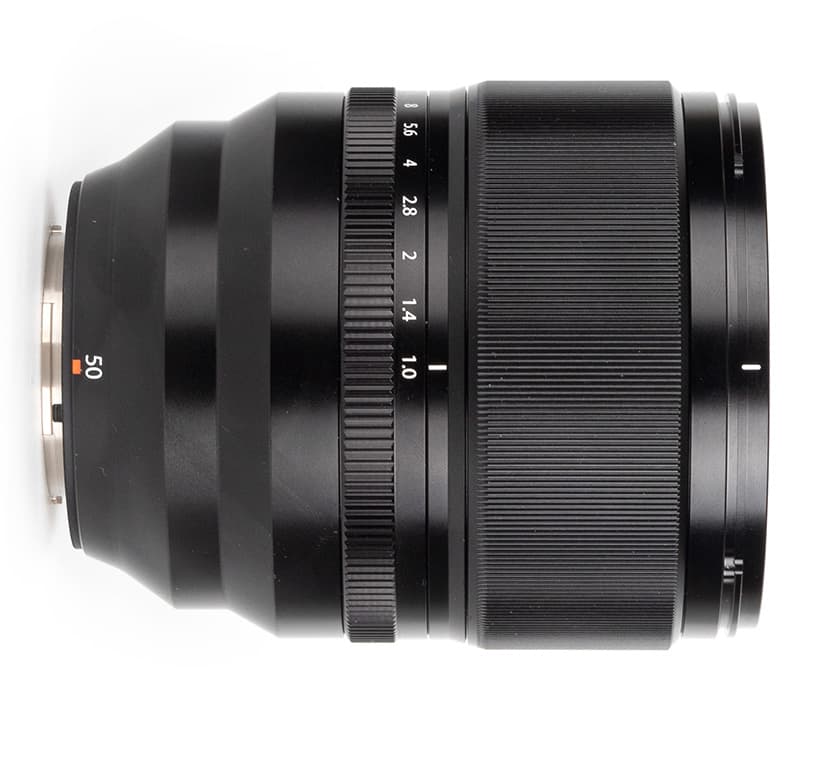 Fujifilm XF 50mm F1.0 R WR l £1,499 l www.fujifilm.com/uk/en
Fujifilm XF 50mm F1.0 R WR l £1,499 l www.fujifilm.com/uk/en
The world’s largest-aperture autofocus lens has engendered plenty of debate among Fujifilm fans, in part because it commands a huge premium over the firm’s much-loved 56mm f/1.2 that’s a particularly fine portrait lens in its own right. It’s also been optimised to deliver attractive background blur ahead of outright wide-open sharpness, which has divided opinion amongst commentators.
However, despite its f/1 aperture, it offers perfectly practical autofocus that, while not the quickest, is fine if you’re not shooting fast-moving action. The optics really make portrait images sing, with a dreamy softness to defocused backgrounds at maximum aperture.
Ultra-macros
There’s something addictive about close-up photography. It allows you to see the world in a whole new way, revealing tiny details that are usually invisible to the human eye. But this inevitably requires specialist optics. Typically, most camera and third-party lens manufacturers produce specialist macro lenses that are designed to deliver life-size magnification; in other words, the image is projected onto the sensor at the same size as the subject is in real life.

Ultra macro lenses let you get in close and capture tiny details. Fujifilm X-T3, Laowa 65mm f/2.8 2x Ultra Macro, 1/5sec at f/11, ISO 160
But for the most striking close-up images, some lenses are available that let you focus in even closer. Over the past few years, Chinese maker Venus Optics has blazed a trail in this sector, with an array of specialist optics in its Laowa lineup. At this point it’s worth considering how the magnification provided by the lens interacts with sensor size and resolution.
A 1:1 macro will fill the frame with a subject measuring 36x24mm on full frame, 24x16mm on APS-C, and 17x13mm on Micro Four Thirds, so the smaller the sensor, the higher the equivalent magnification becomes. But when it comes to the tiniest detail that can be captured, the resolution of the sensor also needs to be considered. When we look at the highest-resolution cameras on the market, Canon’s 32.5MP APS-C EOS 90D and EOS M6 Mark II slightly surpass 20MP Four Thirds models, with both beating 61MP full-frame ones in this regard.
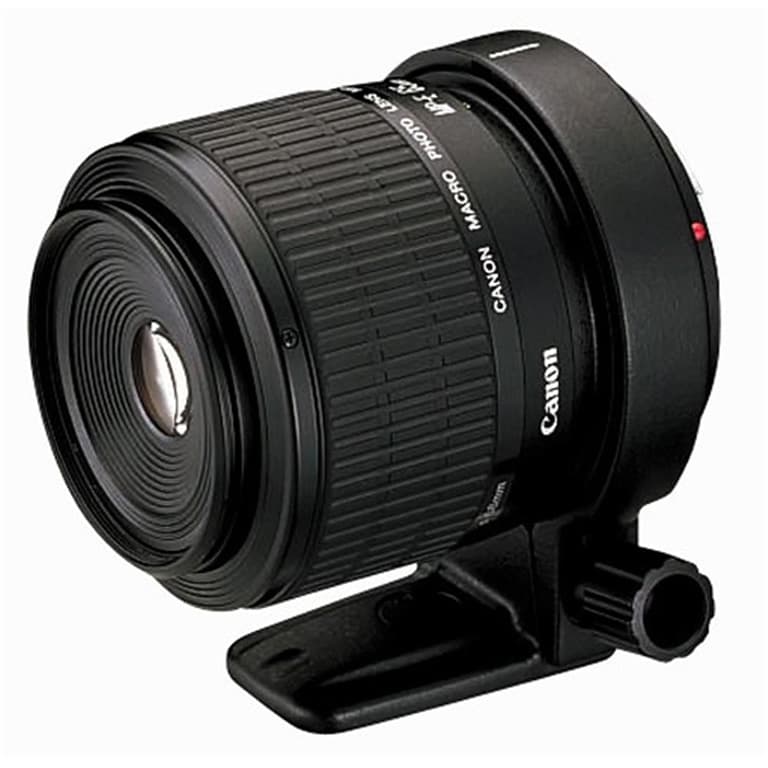
Canon MP-E 65mm f/2.5 1-5x Macro Photo l £1,069 l www.canon.co.uk
One of the most unusual lenses of all, this full-frame manual-focus optic is designed exclusively for macro shooting at extremely high magnifications. It’s not even capable of focusing to infinity; instead it takes over where other macros leave off, offering 1x magnification at a working distance of around 10cm. Turning the large ring around the barrel extends the lens dramatically, focusing closer and increasing the magnification, with a maximum of 5x on offer at a 4cm working distance.
At such levels the slightest camera movement will blur the image, so the lens is equipped with a collar for fixing it to a tripod.
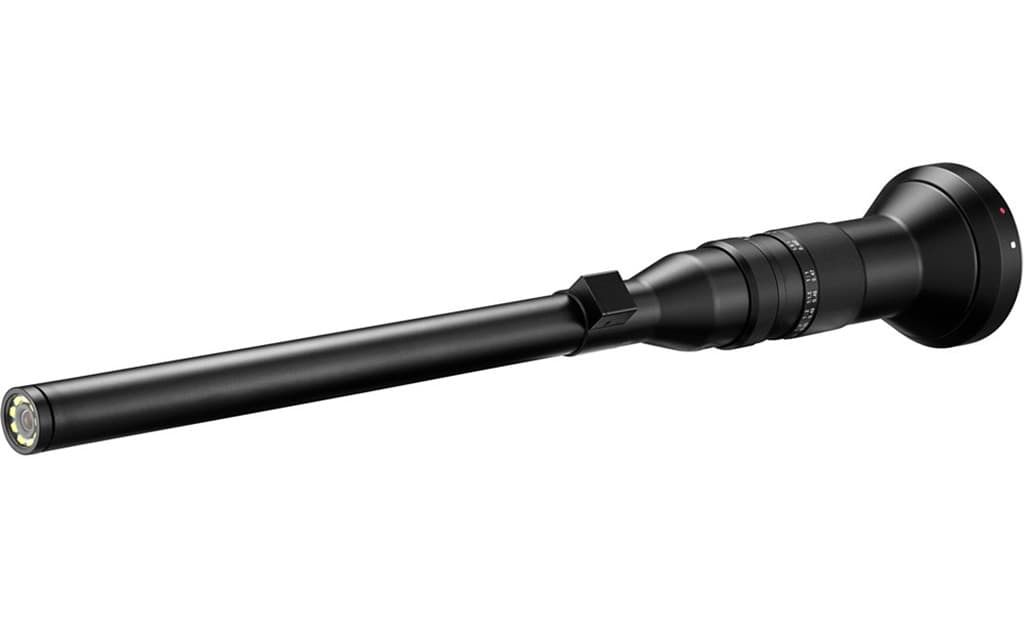
Laowa 24mm f/14 Macro Probe Lens l £1,599 l www.venuslens.net
Available in Canon EF, Nikon F, Sony FE, and Pentax K mounts, this bizarre-looking optic has gained a cult following for its unique capabilities. It focuses from infinity all the way to 2:1 magnification, with an unusual wideangle perspective and extensive depth of field. The long, slim barrel provides access to awkward locations that wouldn’t ba accessible using a normal macro lens, while a USB-powered LED ring light surrounds the front element to provide additional illumination.
The front section of the lens can even be safely immersed in water for shooting aquatic wildlife. There’s nothing else on the market remotely like it. Laowa 100mm f/2.8 2x Ultra Macro APO l £469 l www.venuslens.net
Laowa 100mm f/2.8 2x Ultra Macro APO l £469 l www.venuslens.net
Venus Optics also produces a whole family of Ultra Macro lenses that offer 2x magnification while still focusing to infinity. The 100mm f/2.8 is for full-frame cameras and available in a wide range of mounts for both DSLR and mirrorless, while the 65mm f/2.8 is about half the weight and available in Nikon Z, Sony E and Fujifilm X mounts for APS-C mirrorless cameras. Finally, there’s a 50mm f/2.8 Ultra Macro for Micro Four Thirds that’s smaller and lighter still. All three use a similar optical design, and I was extremely impressed by the 65mm when I reviewed it in Fujifilm X mount.
Ultra-telephotos
While macro lenses allow you to photograph subjects that are very small and close, long telephotos are required for those that are far away. For example, serious bird or aviation photographers routinely use large, expensive telephoto primes.
It’s not our intention to cover lenses with five-figure price tags here, though, so instead we’ve picked out some more affordable and practical alternatives. If you want to be able to shoot with long telephoto reach but without breaking either the bank or your back, there’s a lot to be said for ignoring the current obsession with full frame, and adopting a camera with a smaller sensor.
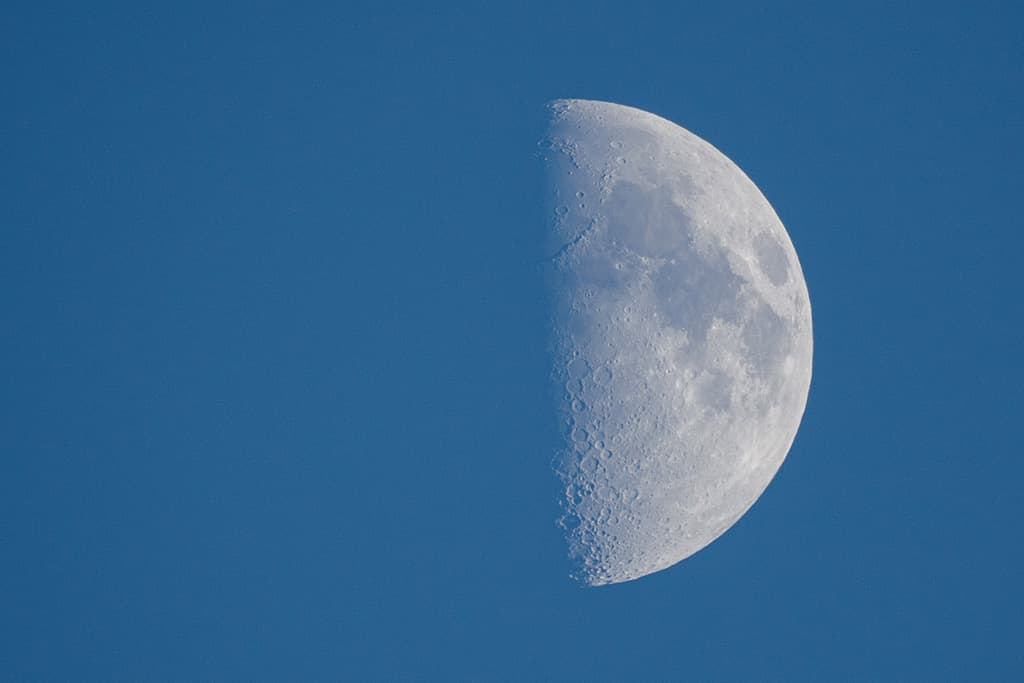
Using a 100-400mm on Micro Four Thirds, I was able to capture this as a quick handheld grab shot Olympus OM-D E-M1 Mark III, Panasonic Leica DG 100-400mm f/4-6.3 ASPH OIS, 1/160sec at f/6.3, IS0 200
If you’re focal-length limited and can’t get any closer to your subject, so are going to be cropping your files, then having a sensor with smaller pixels should deliver more detail. However, this does come with caveats. Lightweight long telephotos will inevitably have small apertures, which means that you will often need to shoot at high ISOs, and this inevitably limits image quality. Atmospheric distortions can also cause significant degradation with telephoto shots, sometimes across surprisingly short distances.
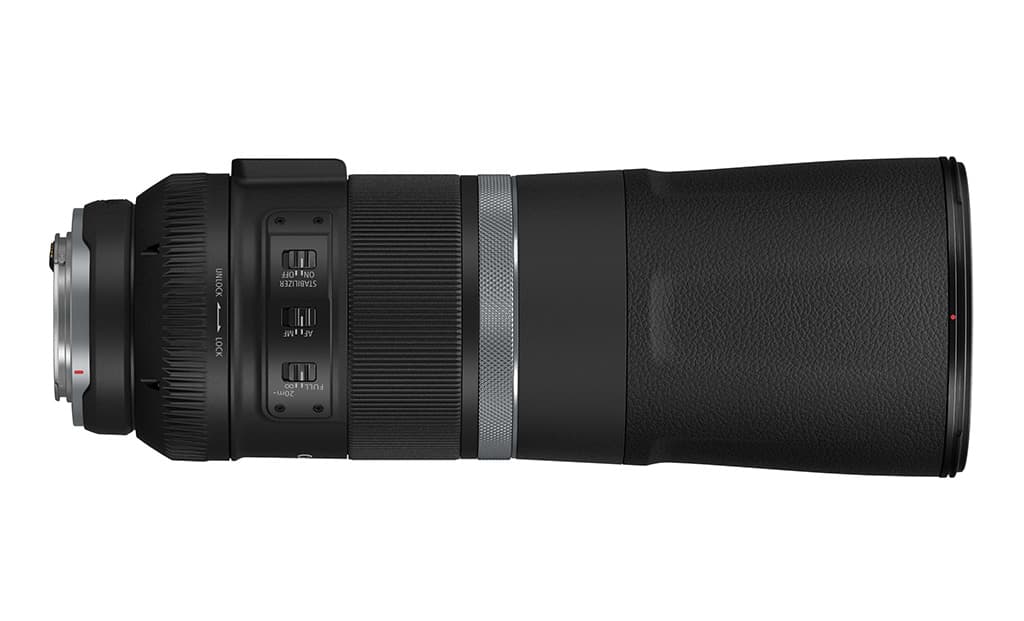
Canon RF 800mm F11 IS STM l £999 l www.canon.co.uk
Designed for Canon’s full-frame EOS R-series mirrorless cameras, this remarkable lens employs an array of technologies to keep its size and price down. It has a fixed f/11 aperture, exploits diffractive optics to shorten its physical length, boasts optical stabilisation to help keep images sharp and employs a retracting barrel design for additional portability.
As a result, it measures just 35.2cm in length when collapsed and weighs 1.26kg, which makes it a tempting option for enthusiast wildlife photographers. The main catch is its 6m minimum focus distance. The firm also makes the even smaller RF 600mm F11 IS STM (£769) with a similar design.
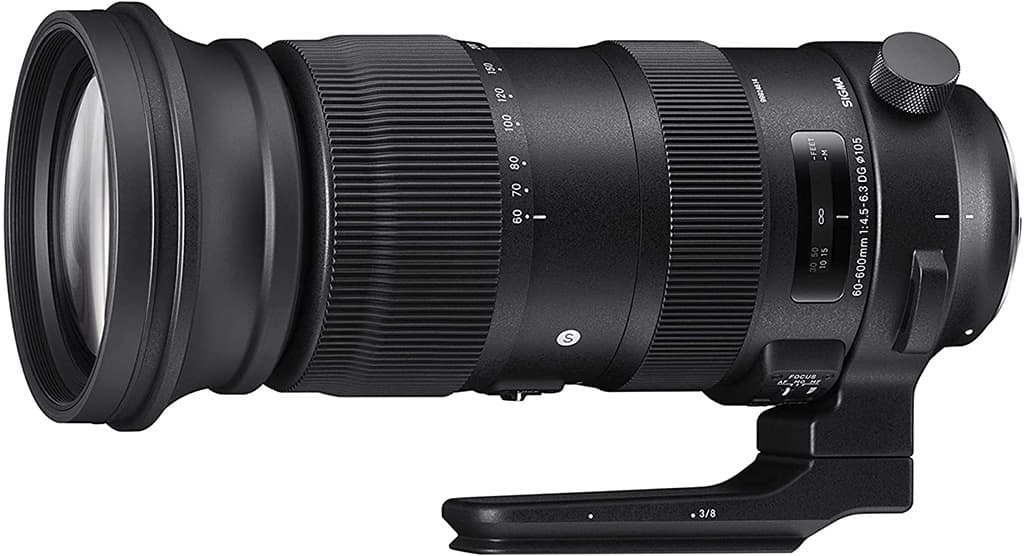
Sigma 60-600mm f/4.5-6.3 DG OS HSM l £1,699 l www.sigma-imaging-uk.com
For DSLR users, this is arguably the most versatile ultra-telephoto zoom available. It’s a development of the firm’s 150-600mm f/5-6.3 DG DN OS design, which itself comes in two different versions. This lens, though, widens the short end to 60mm, giving a 10x zoom ratio. This might seem counter-intuitive, but it expands the ability to keep shooting as a distant subject gets closer, in effect negating the need to carry an additional 70-200mm zoom. This is useful when the action can occur across a broad range of distances, such as airshows and field sports.
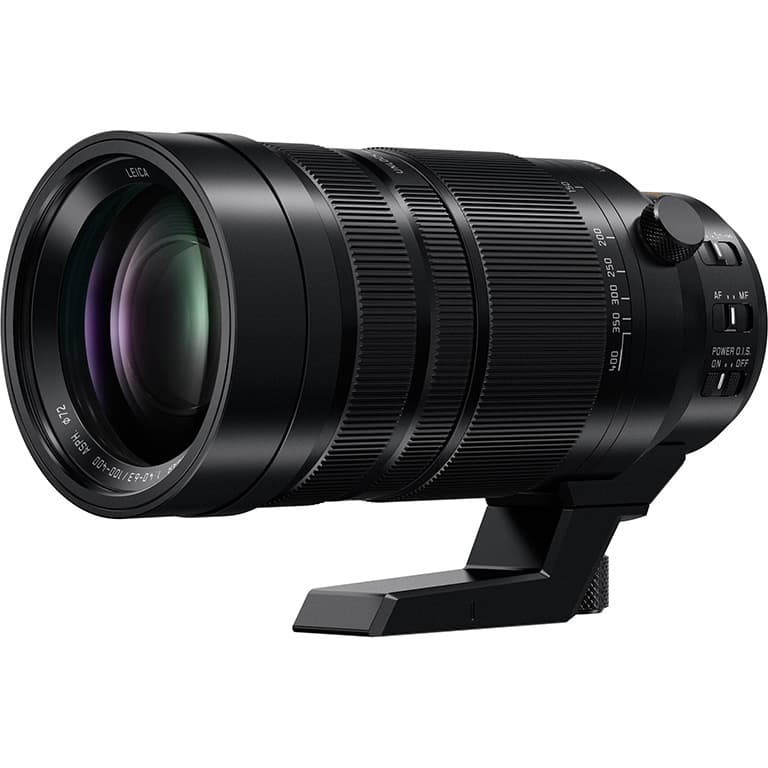
Panasonic Leica DG 100-400mm f/4-6.3 ASPH OIS l £1,199 l www.panasonic.com/uk
At first sight, this lens looks like any other 100-400mm zoom. But because it’s made for Micro Four Thirds, it gives a 200-800mm equivalent range, while being smaller and lighter than any of its peers. It also boasts premium glass and extremely effective optical image stabilisation.
The result is an ultra-telephoto zoom that’s easy to carry around and can readily be used handheld. Indeed MFT users are well-served in this department; Olympus also makes a similar, although bulkier lens, while for serious wildlife photographers it offers the incredible 150-400mm F4.5 TC 1.25x IS Pro, which delivers a 1000mm equivalent range but costs £6,500.
Tilt-shift lenses
Anybody who’s photographed buildings using a wideangle lens will be familiar with the converging verticals effect, which makes them look like they’re falling over backwards. While this so-called keystone distortion is straightforward to correct in software such as Photoshop, this comes at the cost of a severe drop in image resolution. As a result, there’s still an argument for doing things the old-fashioned way, using a perspective control lens.

Shift lenses let you keep verticals straight without sacrificing image resolution. Sony Alpha 7 II, Samyang T-S 24mm f/3.5 ED AS UMC, 1/10sec at f/11, IS0 1600
Such tilt-shift lenses allow the optical unit to be moved relative to the camera in two different ways. Lateral shift movements enable the correction of converging verticals, while angular tilt movements can be used to manipulate depth of field. All the tilt-and-shift lenses on the market are designed for use on full-frame DSLRs, with Canon offering 17mm, 24mm, 50mm, 90mm and 135mm focal lengths, while Nikon’s range covers 19mm, 24mm, 45mm and 85mm.
The wider options are ideal for architecture, while the longer ones tend to be used more for close-up and product photography. For photographers on a tighter budget, some interesting third-party optics are available.
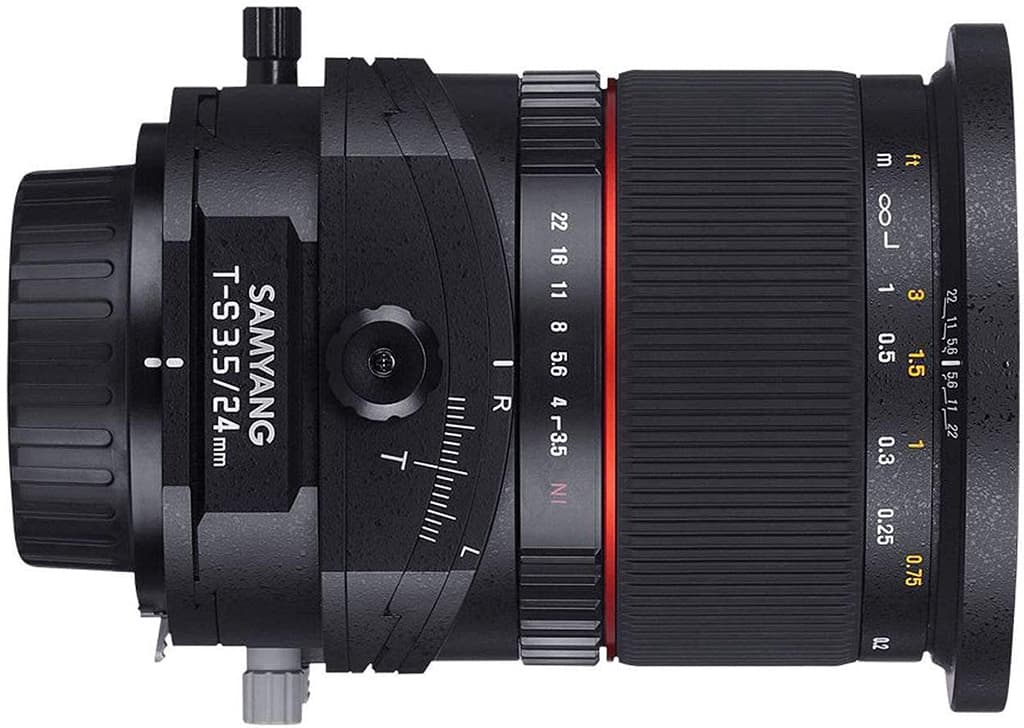
Samyang T-S 24mm F3.5 ED AS UMC l £689 l www.samyanglens.com
For photographers looking to exploit both tilt and shift movements for architectural photography, this is pretty much the only third-party option available. Designed principally for use on full-frame DSLRs, it has been made in a wide range of mounts. Its control arrangement and operational principles are very similar to Canon’s TS-E 24mm f/3.5 L II, but it’s less than half the price.
Not surprisingly, this means it doesn’t provide the same optical quality or smoothness of operation, but used carefully it’ll deliver decent results. It provides +/-12mm shift and +/- 8° tilt, with both movements being independently rotatable relative to the camera. Both focusing and aperture operation are manual.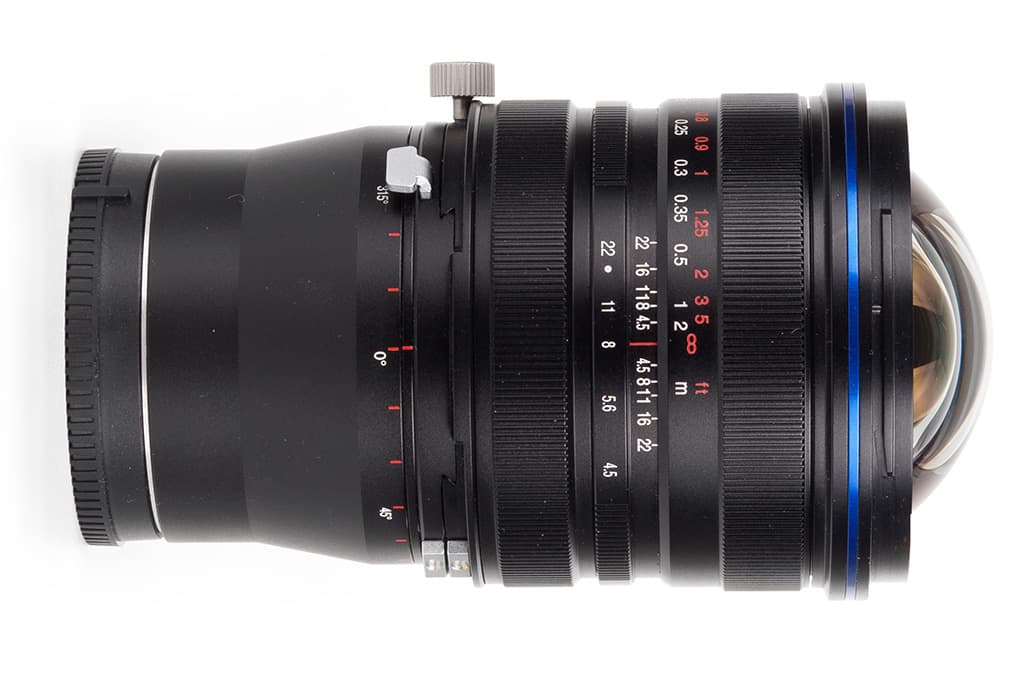 Laowa 15mm f/4.5 Zero-D Shift l £1,249 l www.venuslens.net
Laowa 15mm f/4.5 Zero-D Shift l £1,249 l www.venuslens.net
The world’s widest-angle perspective control lens provides +/-11mm shift via a unique dial mechanism that allows smooth, precise adjustment. However it lacks a tilt facility, which enables a smaller and lighter design. The direction of shift can be rotated freely relative to the camera, allowing the correction of either converging verticals or horizontals, or a mixture of both. Focusing and aperture operation are both manual, controlled by traditional rings around the lens barrel.
The Zero-D designation indicates extremely low barrel distortion, which is highly desirable from this kind of lens. It’s an impressive tool for serious architectural photographers, especially those who regularly shoot interiors.
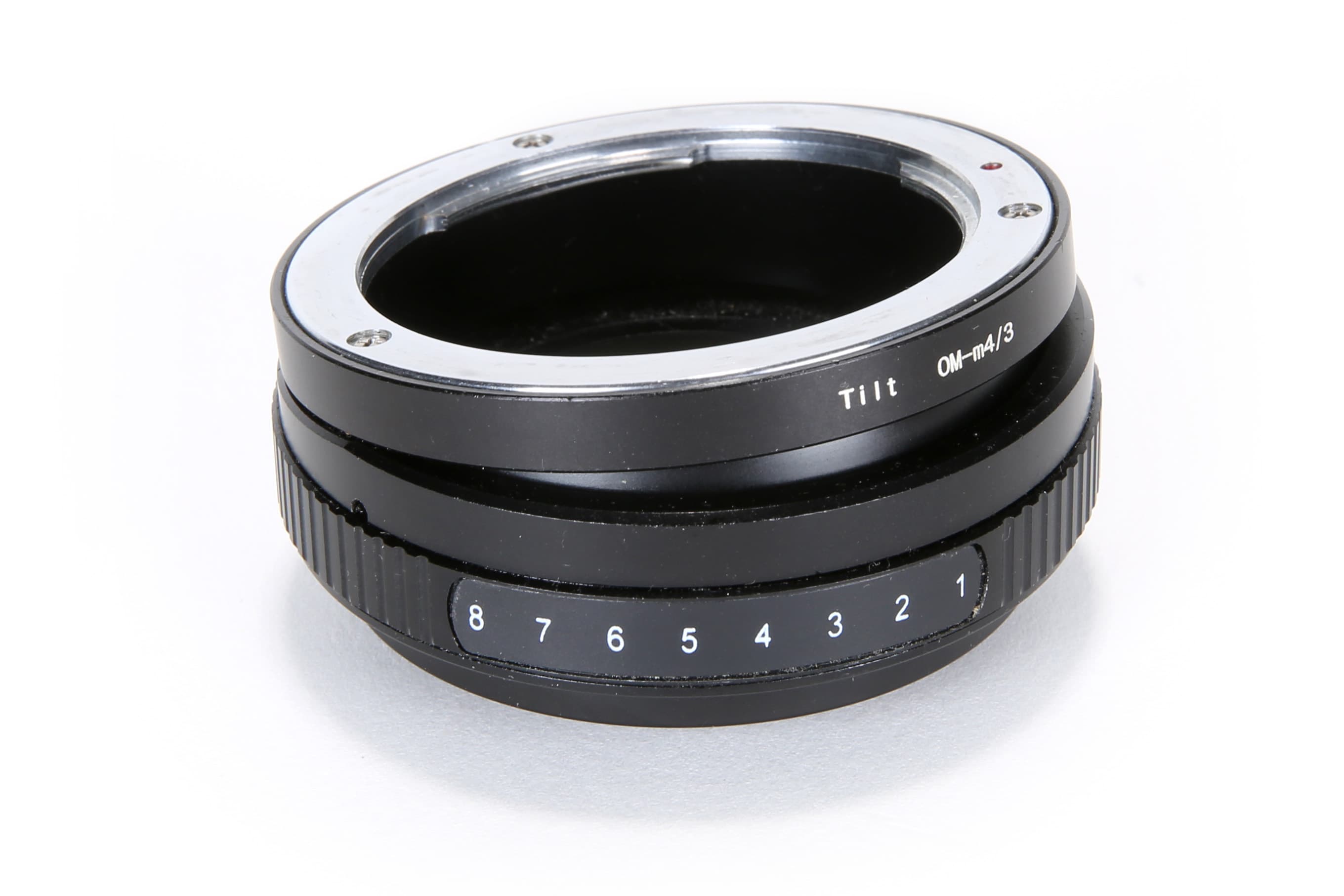
Tilt-lens adaptors
If you use a mirrorless camera and would like to experiment with lens tilt for manipulating depth of field, mount adapters can be bought for the purpose for as little as £30 from Amazon and eBay. They work best with vintage lenses for 35mm film SLRs that have mechanical focus and aperture control, and provide a highly controllable means of either increasing depth-of-field for close-ups, or producing ‘fake miniature’ effects. More complex (and expensive) versions include both tilt and shift movements, but are harder to find.
Creative lenses
The story of digital photography, in terms of hardware, has been generally one of ever-increasing technical quality. The search for imaging perfection has seen sensor resolutions increase, while noise has simultaneously been driven to a minimum. Similarly lenses have grown ever sharper, especially at large apertures and towards the edges of the frame, although this means they’ve become larger and more expensive too.

Lensbaby’s creative optics allow you to blur away your subject’s surroundings that would normally be in focus Sony Alpha 7 III, Lensbaby Edge 80, 1/680sec at f/2.8, ISO 100
But a few companies have fought stubbornly against this trend, including Lensbaby, Lomography and Meyer Optik Görlitz. Their quirky, technically imperfect lenses aren’t every photographer’s cup of tea, but in the hands of the right user, they can give great results. All three firms produce a range of lenses, with Lensbaby and Lomography’s offerings in particular being imaginative and varied.
A common thread that they all embrace is the idea of using blur for creative effect. However, they do so in a number of different ways. Some render eye-catching bokeh across the entire frame, while others give a swirly look to the background around a sharp central subject.

Lensbaby Composer Pro II with Edge 80 l £409 l www.lensbaby.com
In general, Lensbaby’s optics are all about creatively exploiting selective focus effects and surrounding the subject with blur. The firm has moved on dramatically since its earliest, distinctly lo-fi efforts, and now produces several types of lens with different characteristics.
Its Composer Pro II housing can accept an array of swappable optics, with its tilting design allowing the user to move a ‘sweet spot’ of focus over the subject. The Edge 80 optic is a short telephoto that’s fairly conventionally corrected, which means that when tilted, it produces an edge-to-edge slice of sharp focus. It’s particularly well suited to portrait and close-up photography.
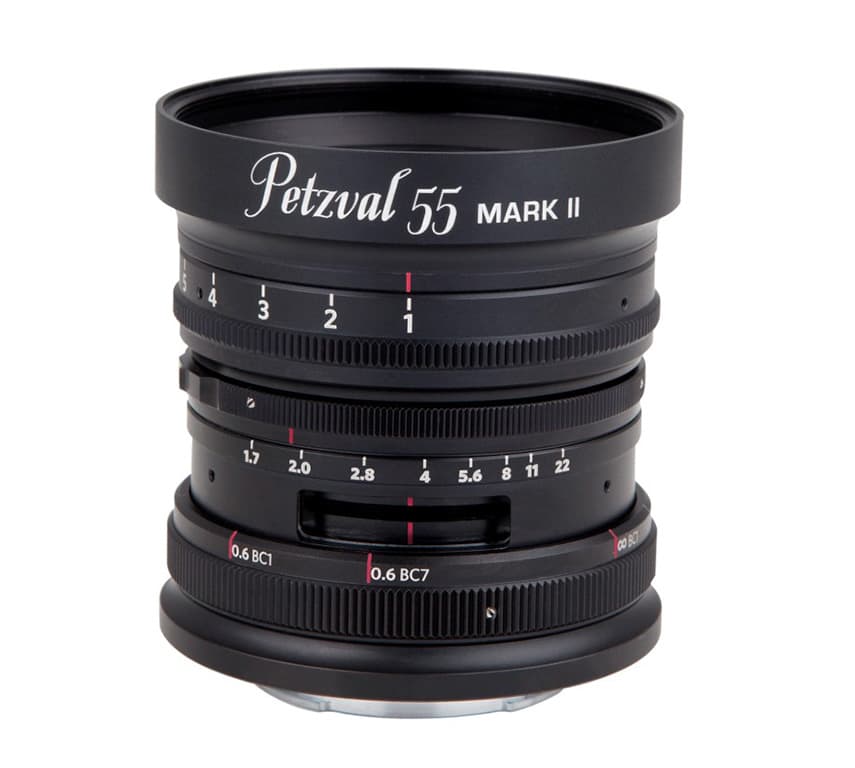
Lomography Petzval 55 mm f/1.7 MKII l £349 l shop.lomography.com
Lomography specialises in re-imagining vintage lenses for modern cameras. Its Petzval 55 mm f/1.7 MKII is based on a 19th-century optical design, with a relatively small region of central sharpness and characteristic ‘swirly bokeh’. However it’s specially designed for the latest full-frame mirrorless cameras, being available in Sony E, Canon RF and Nikon Z mounts.
This manual-focus optic employs an unusual dual aperture system; along with a stepless 8-bladed diaphragm, it also takes drop-in Waterhouse stops allowing creatively shaped out-of-focus highlights. In addition, a Bokeh Control Ring provides further control over the way backgrounds are rendered.
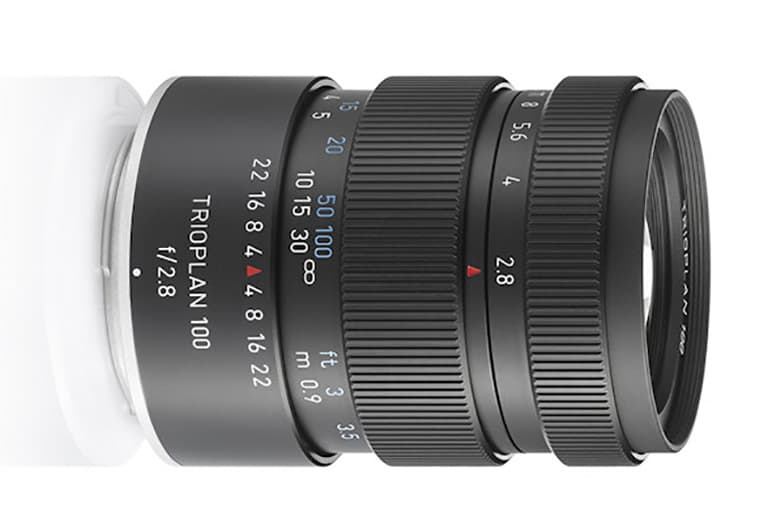
Meyer Optik Görlitz Trioplan 100 f2.8 II l Approx. £880 inc postage and VATl www.meyer-optik-goerlitz.com/en
Meyer Optik Görlitz is a reincarnation of a famous old name, and its tag-line is ‘Unique lenses with character’. Its lenses are based on vintage optical formulae, but the latest versions boast improved, up-to-date mechanical designs.
The Trioplan 100mm f/2.8 typifies the line, with its triplet optical design delivering distinctive ‘soap bubble’ bokeh in out-of-focus backgrounds. It’s available in a wide range of mounts, not only for DSLR and mirrorless cameras, but also Leica M (although without rangefinder coupling, meaning it has to be used in live view). Just be aware that 20% VAT is payable on imports from the EU.
Further reading
Our best lens round-ups
Best lenses for mirrorless systems






